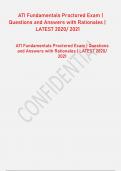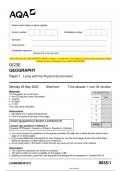Exam (elaborations)
NR507 Final Exam 2024 / NR 507 Week 6 Exam Advanced Pathophysiology Expected Questions and Answers (2024 / 2025) (Verified Answers)- Chamberlain
- Course
- Institution
NR507 Final Exam 2024 / NR 507 Week 8 Exam Advanced Pathophysiology Expected Questions and Answers (2024 / 2025) (Verified Answers)- Chamberlain NR 507 (Latest 2023 / 2024) Final Exam Advanced Pathophysiology - Chamberlain College of Nursing Verified Answers (Graded A+ )
[Show more]












